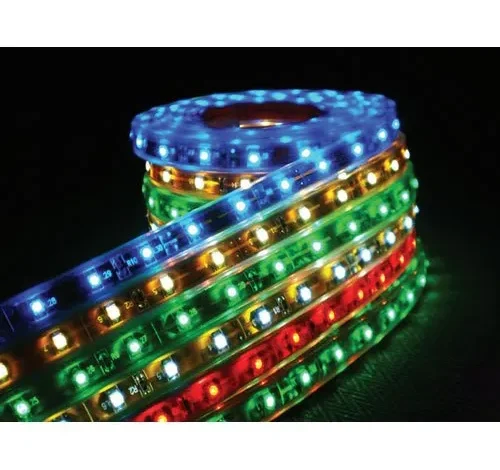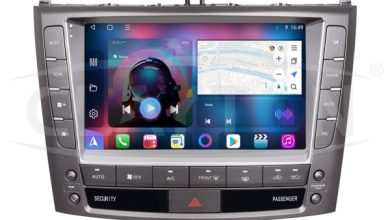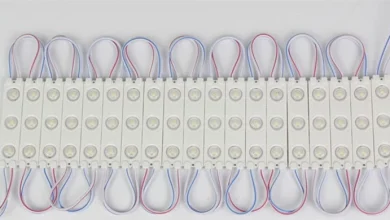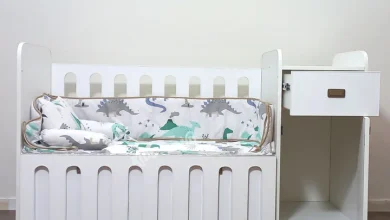
Table of Contents
ToggleIn the world of interior design, lighting isn’t just a finishing touch—it’s an essential element that transforms spaces, sets moods, and defines style. One of the most versatile lighting tools available today is the LED strip light. When sourced wholesale, these lights offer not only affordability but also limitless creative potential.
Interior designers, contractors, and even DIY homeowners are turning to wholesale LED strip lights to bring vibrant, efficient, and customizable lighting into both residential and commercial spaces. In this article, we explore innovative ways to use LED strip lights that elevate any interior design project.
1. Accent Lighting for Ceilings and Walls
One of the most popular uses of LED strip lights in interior design is indirect ceiling lighting, often called cove lighting. By installing LED strips around the perimeter of the ceiling, you create a soft, floating glow that adds elegance and dimension to the space.
You can also use strips behind wall panels or along textured walls to highlight architectural elements and create a dramatic effect.
🛠️ Pro Tip: Use warm white strips for a cozy ambiance or RGB lights for customizable color themes in lounges, bedrooms, or entertainment areas.
2. Under-Cabinet and Shelf Lighting
In kitchens, bathrooms, and closets, LED strip lights are ideal for under-cabinet lighting. Not only do they enhance visibility on countertops, but they also contribute to a sleek, modern look.
Shelf lighting is another great application. LED strips can be mounted beneath bookshelves, display cases, or wall-mounted units to highlight decorative items and give the space a high-end feel.
3. Staircase Illumination
LED strip lights can be elegantly embedded along stair risers or under the stair tread to illuminate each step, increasing both aesthetics and safety—especially at night.
This design technique is popular in contemporary homes, luxury villas, and commercial buildings like hotels and office lobbies.
⚠️ Safety Note: Always use motion sensors or timers with stair lighting for energy efficiency and automatic control.
4. Furniture Integration
Modern designers love integrating LED strip lights into furniture for a futuristic and unique style. Examples include:
-
Under-bed lighting for a floating effect
-
Backlighting headboards in bedrooms
-
Illuminated TV stands or entertainment units
-
LED-lit wardrobes and drawers for visibility and elegance
By buying LED strip lights wholesale, designers can experiment affordably across multiple furniture pieces in one project.
5. Mirror Backlighting
Backlit mirrors are a favorite in high-end bathrooms and salons. Installing LED strips behind mirrors offers:
-
A soft glow for vanity lighting
-
A luxurious and spa-like feel
-
Reduced harsh shadows on the face
RGB strip lights can even change colors depending on time of day or mood settings—perfect for clients who love personalization.
6. Ambient Lighting in Living Rooms
LED strip lights can be creatively placed:
-
Behind TVs for bias lighting
-
Along the bottom edges of sofas
-
Around coffee tables
-
Above crown molding or below baseboards
These small touches create layers of light that make a room feel more inviting and dynamic, especially when paired with smart home lighting systems.
7. Creative Art and Wall Designs
LED strips can serve as part of the art itself. Designers often build custom wall panels or geometric patterns using LED strips and wood/metal frames to create light art installations.
Some use addressable RGB LED strips for interactive wall lighting that syncs with music or motion.
This is a high-impact design element used in:
-
Restaurants
-
Luxury apartments
-
Offices
-
Home studios or gaming rooms
8. Children’s Rooms and Themed Spaces
With wholesale access to colorful RGB LED strips, designers can bring themed children’s rooms to life—think:
-
Galaxy-themed ceilings with twinkling light strips
-
Race car beds with underglow effects
-
Princess castles with shimmering pastel lights
Because LED strips are low-voltage and cool to the touch, they’re a safe and fun option for kids’ rooms.
9. Home Office and Workspace Lighting
With remote work becoming more common, the home office has become a design priority. LED strip lights can be installed:
-
Behind monitors to reduce eye strain
-
Along desktops or shelves for extra task lighting
-
In acoustic panels for a modern look
Cool white or daylight-toned strips enhance focus and productivity—ideal for work-from-home environments.
10. Wellness and Mood Lighting
Lighting impacts mood. Designers now use tunable LED strips that shift color temperature from cool to warm to match the body’s circadian rhythm.
This is especially effective in:
-
Bedrooms for sleep support
-
Spas and wellness studios for calming environments
-
Meditation or yoga rooms with soothing ambient lighting
Wholesale LED strip lights allow designers to experiment affordably with wellness-based lighting themes.
Final Thoughts
Wholesale LED strip lights offer more than just cost savings—they unlock a world of creative freedom and design innovation. Whether you’re designing a minimalist home, a luxury hotel suite, or a funky nightclub, these lights give you the ability to mold light into any space or form.
With endless customization, easy installation, and compatibility with modern smart systems, LED strips are here to stay—and they’re reshaping the way we think about interior lighting.
If you’re a designer, builder, or supplier, now is the perfect time to stock up on wholesale LED strip lights and start building environments that glow with personality and purpose.
Would you like this blog turned into a visual guide with example images or Pinterest-style inspiration?
You said:
ChatGPT said:
Absolutely! Here’s the sixth blog article based on the sixth title:
Title: Wholesale LED Strip Lights vs. Retail: Which Saves You More?
Length: ~900 words
Wholesale LED Strip Lights vs. Retail: Which Saves You More?
Whether you’re a business owner, interior designer, reseller, or a homeowner working on a large DIY project, LED strip lights are an incredibly versatile and energy-efficient lighting solution. But when it comes time to purchase, one question always comes up:
Should you buy LED strip lights wholesale or retail?
While retail purchases are convenient, especially for small-scale needs, wholesale offers distinct advantages that can translate to significant long-term savings. In this article, we’ll break down the key differences between wholesale and retail LED strip lights, and help you determine which option truly saves you more—not just in cost, but also in value.
Understanding the Basics: Wholesale vs. Retail
Let’s define what each buying method typically involves:
-
Retail LED Strip Lights
Purchased in small quantities, typically through online stores, local lighting shops, or big-box retailers. Designed for end-consumers with packaging, manuals, and often higher per-unit pricing. -
Wholesale LED Strip Lights
Bought in bulk, directly from manufacturers or distributors. Targeted at businesses, contractors, or resellers. Lower per-unit cost, less packaging, and typically broader customization options.
Now, let’s dive deeper into how they compare.
1. Pricing: Wholesale Wins in the Long Run
The most obvious and significant difference lies in price per meter (or foot). When buying retail:
-
You may pay $10–$20 per meter for high-quality LED strip lights.
-
This price often includes fancy packaging, middleman markup, and overhead costs.
With wholesale:
-
You can get the same or better quality LED strips for $2–$6 per meter.
-
The larger the order, the greater the discount.
💡 Example: If you need 100 meters of LED strips for a project, buying retail might cost $1,500+. The same quantity wholesale could be under $600.
Verdict: Wholesale is the clear winner for cost savings on large orders.
2. Quality and Customization
Retail stores often carry standard versions of LED strips to suit general consumer demand. These may include:
-
Limited color temperature options (e.g., warm white or cool white only)
-
Fixed lengths (1m, 2m kits)
-
Basic controllers or power adapters
In contrast, wholesale suppliers offer far more flexibility, such as:
-
Custom strip lengths and densities (30, 60, 120 LEDs/m)
-
RGB, RGBW, and addressable strips
-
Voltage options (12V, 24V, 48V)
-
Waterproofing (IP65/IP67/IP68)
-
Smart integrations (Wi-Fi, Bluetooth, Zigbee)
If you need custom solutions, wholesale is the only way to go.
Verdict: Wholesale wins for versatility and professional-grade customization.
3. Support for Business and Large Projects
Retail purchases are fine for small DIY jobs, but if you’re:
-
Outfitting a hotel, bar, or commercial building
-
Building a lighting business or online store
-
Working with contractors or interior designers
…then you’ll need bulk quantities, consistent quality, and possibly branding or technical assistance.
Wholesale suppliers often provide:
-
Dedicated account managers
-
Sample testing before bulk orders
-
OEM/private label options
-
Warranty policies tailored to commercial clients
-
Logistics support for large shipments
Verdict: Wholesale is better equipped to handle B2B or large-scale projects.
4. Availability and Inventory Control
Retail availability is limited by store stock or platform listings. If you suddenly need more of the same LED strip model, you may not find a match.
Wholesale suppliers often maintain:
-
Consistent product batches
-
Detailed specification sheets
-
Long-term supply agreements
This is especially important when color tone matching or uniform brightness matters across multiple installations.
Verdict: Wholesale ensures continuity and inventory security for ongoing or repeat projects.
5. Packaging and Accessories
Retail LED strip kits typically come:
-
Pre-packaged
-
With instructions, remotes, power adapters, connectors
That’s great for plug-and-play consumers—but not ideal if you’re buying in bulk or supplying your own accessories.
Wholesale LED strips are:
-
Often unboxed or in bulk rolls
-
More efficient for professional use or resale
-
Cheaper due to less packaging waste
That said, retail might still be suitable for individuals who want ready-to-use kits with no setup hassle.
Verdict:
-
For casual users: Retail offers convenience
-
For professionals or resellers: Wholesale offers cost-efficiency
6. Shipping and Lead Times
Retail orders, especially from local shops or Amazon, offer:
-
Fast shipping (1–3 days)
-
Low shipping fees for small orders
Wholesale orders typically:
-
Ship internationally (7–21 days from manufacturers)
-
Require larger upfront planning
-
May involve customs or import taxes
However, wholesalers often offer bulk freight discounts, and with the right supplier, lead times can be managed efficiently.
Verdict:
-
Retail wins for speed on small jobs
-
Wholesale wins for savings on planned bulk purchases
7. Who Should Choose What?
Choose Retail If You Are:
-
A homeowner with a small DIY lighting need
-
Trying out LED strip lights for the first time
-
Needing a quick, ready-to-use solution
Choose Wholesale If You Are:
-
A business owner or reseller
-
An electrician, contractor, or interior designer
-
Completing large-scale or repeat installations
-
Looking to build your own LED lighting brand
Final Verdict: Wholesale Offers More Value—If You’re Ready for Scale
When comparing wholesale vs. retail LED strip lights, the final choice depends on your needs. If you’re lighting a bedroom or kitchen, retail is convenient. But if you’re planning to buy more than a few meters—or you’re operating a business—wholesale LED strip lights offer significantly better value.
From cost savings and customization to supply chain control and business support, wholesale opens the door to long-term profitability and scalability.
So ask yourself: Are you buying for now—or building for the future?








